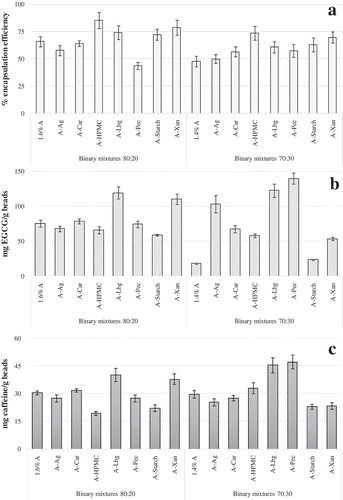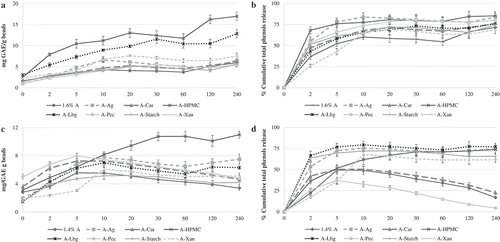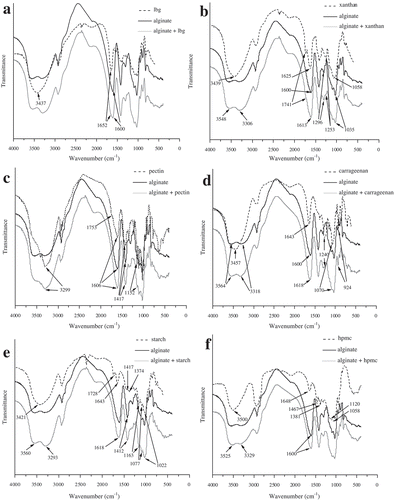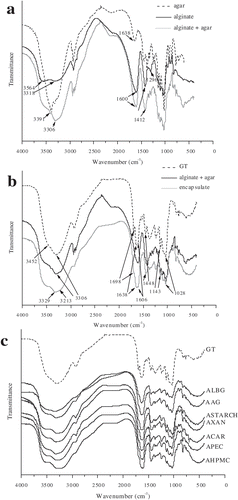Figures & data
Table 1. Particle size distribution and textural parameters of formulated hydrogel microbeads encapsulating green tea bioactive compounds.
Figure 1. Encapsulation efficiency (%) of A: total polyphenols; B: epigallocatechin gallate (EGCG); and C: caffeine contents (mg/g beads) entrapped in the formulated microparticles.

Figure 2. Release profiles of total polyphenols from the formulated microbeads composed of 80:20 binary mixtures (a, b) and 70:30 binary mixtures (c, d) expressed as mg GAE/g beads (a, c), and percentage (%) of cumulative release (b, d).

Figure 3. FT-IR spectra of plain biopolymers (alginate, polysaccharides A: locust bean gum; B: xanthan; C: pectin; D: carageenan; F: starch; and G: HPMC) and their binary mixtures.

Figure 4. FT-IR spectra of A: plain biopolymers alginate, agar and their binary mixtures; B: green tea (GT) encapuslated in the alginate-agar binary mixture; and C: microencapsulates of green tea in all evaluated binary mixtures as carriers.

Table 2. Principal component weighting of the data set.

